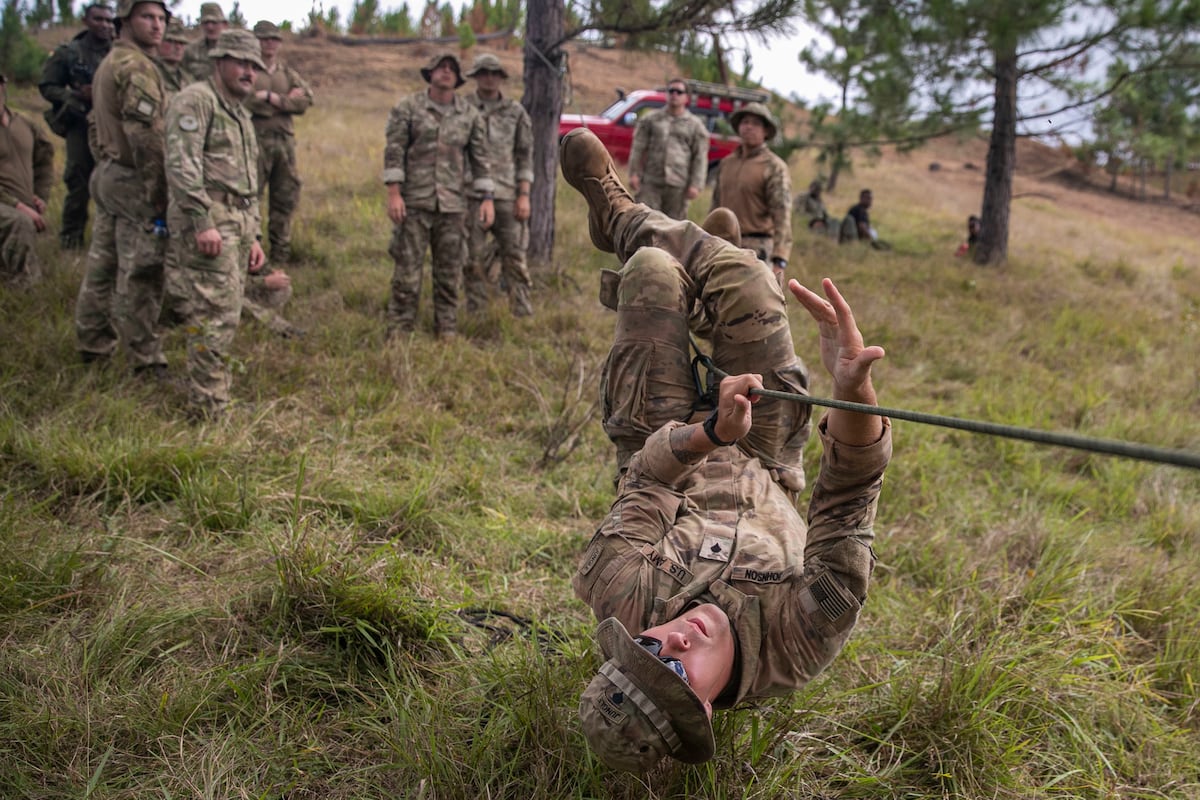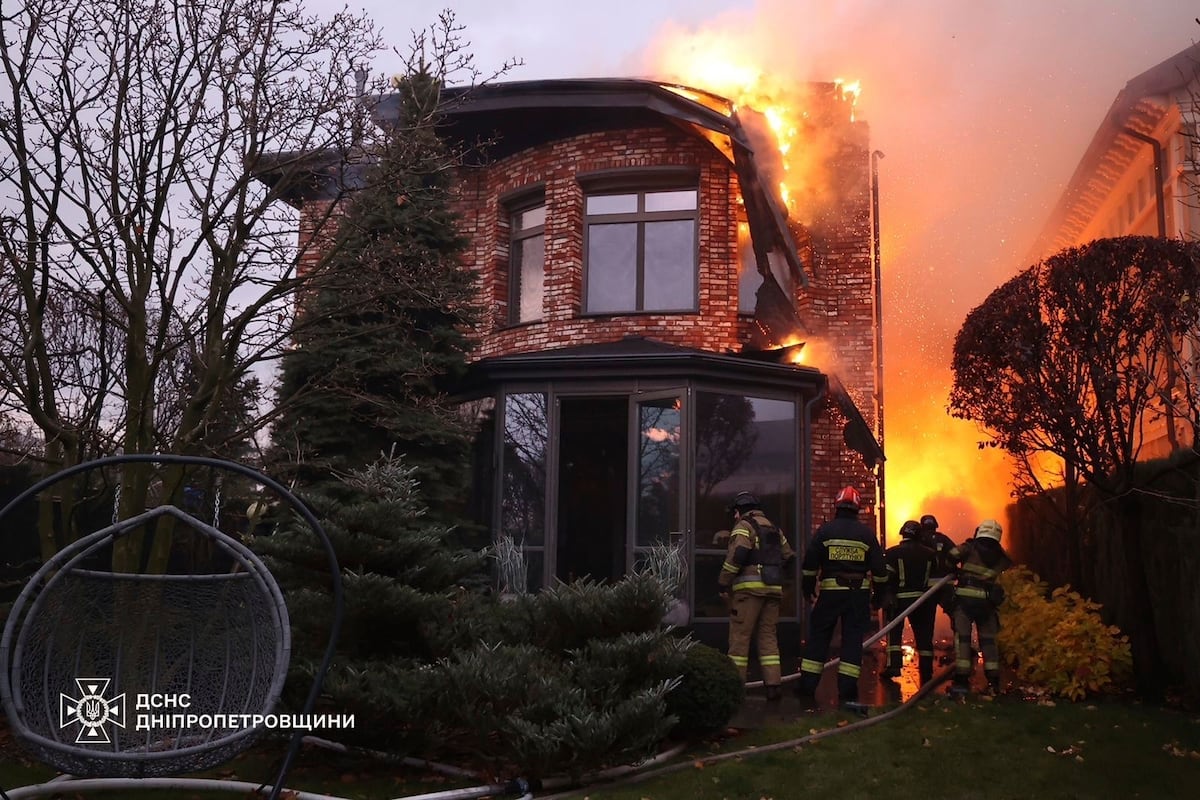Iran has sent Russia more than 200 short-range ballistic missiles, Ukrainian officials said last week, citing classified intelligence reports. The weapons are believed to be Fath-360 missiles, “which can reach targets up to 70 miles away,” the UK’s Times reported Friday, two days after the shipment is believed to have arrived at “an undisclosed port in the Caspian Sea.”
G7 leaders predicted this scenario in mid-June, warning in a joint statement that such a transfer “would represent a substantive material escalation and a direct threat to European security. We are prepared to respond in a swift and coordinated manner, including with new and significant measures,” they said.
Expert reax: “It will mean Russia’s limited supply of its own Iskander missiles can now be focused on long-range targets; that’s very worrying,” analyst Sean Bell told Sky News.
Tight spot: “The Patriot missile-defense system is Ukraine’s only reliable way to shoot down these missiles, but Kyiv has few of them,” the Wall Street Journal noted Friday.
Possibly blowback could include banning “Iran’s flag carrier Iran Air from flying to European airports, which could significantly impact remaining trade ties,” the Journal reported. Robust sanctions could also be expected in the coming weeks. “More appropriate would be the interdiction of the missiles themselves,” Michael Singh of the Washington Institute said, without elaborating on how such an interdiction might occur.
Has the UK reached its limit of longer-ranged cruise missiles to share with Ukraine? Matt Savill of the Royal United Services Institute considered such a scenario, writing Sunday on social media. “The former UK Defence Secretary visited a factory earlier in the year and talked about ‘production’, but I haven’t seen anything that suggests brand new missiles are being produced for the UK, as opposed to older ones being upgraded or re-conditioned,” Savill wrote. What’s more, when British military officials recently updated a public document regarding stockpiles, the Storm Shadow cruise missile “wasn’t on the list of new contracts placed,” Savill said.
New: European nations must increase their defense and technology spending by almost a trillion dollars, according to an almost 70-page analysis published Monday for the European Union.
Background: “Europe has been worrying about slowing [economic] growth since the start of this century,” reads the report’s opening sentence. But more recently, “Europe has abruptly lost its most important supplier of energy, Russia. All the while, geopolitical stability is waning, and our dependencies have turned out to be vulnerabilities.”
The report calls for an “unprecedented” rise in defense spending, calling for an increase of “around 5 percentage points of GDP to levels last seen in the 1960s and 70s,” the authors write. “This is unprecedented: for comparison, the additional investments provided by the Marshall Plan between 1948-51 amounted to around 1-2% of GDP annually.”
A related issue: “The defence industry is too fragmented,” the authors warn, “hindering its ability to produce at scale.” The defense industries also suffer “from a lack of standardisation and interoperability of equipment.” To illustrate, “twelve different types of battle tanks are operated in Europe, whereas the US produces only one,” the report says. Read over the entire document (PDF), here.
Coverage continues below the fold…
Welcome to this Monday edition of The D Brief, brought to you by Ben Watson with Bradley Peniston. Share your newsletter tips, reading recommendations, or feedback here. And if you’re not already subscribed, you can do that here. On this day in 2003, and after sustaining damage to its left wing during launch 15 days prior, Space Shuttle Columbia disintegrated upon re-entry over the U.S., killing all seven astronauts on board.
Developing: A Russian drone appears to have crashed in Latvia on Saturday. “Preliminary data indicate that it is a military UAV of the Russian Federation, and, according to the information available to the National Armed Forces, it flew into our airspace from Belarus,” Latvia’s military said in a statement this weekend.
“The number of such incidents is increasing along the Eastern flank of NATO and we must address them collectively,” Latvian President Edgars Rinkēvičs said on social media Sunday.
Battlefield update: Russian invasion forces are advancing closer to the Ukrainian city of Pokrovsk, with some reportedly less than five miles away. Recent aerial attacks have left half of Pokrovsk without power and trains to the city are no longer operating, the BBC reports on location. “The city is quickly becoming deserted. Just two months ago, 48,000 people were still living here. Today half of them have already left,” Abdujalil Abdurasulov writes.
Why it matters: “Pokrovsk is a key transportation hub. If it falls, then Russian forces will cut off one of the main supply routes in the region. This will likely force Ukraine to retreat from Chasiv Yar and the front line will move closer to Kramatorsk. For Ukraine, this would effectively mean the loss of almost the entire Donetsk region, which the Kremlin has fought to capture since the beginning of their invasion.” Read more, here.
Related reading:
Israeli strikes in Syria kill 14 dead, wound more than 40. Israel has occasionally bombed military sites in Syria in the months since Hamas’ Oct. 7 assault, but “the intensity and death toll of Sunday night’s strikes were unusual,” reports the Associated Press, adding: “One of the sites targeted was a research center used in the development of weapons, a war monitor said. Syrian officials said civilian sites were targeted.” More, here.
Israel forces also apparently withdrew from the West Bank city of Jemin and its nearby refugee camp after more than a week of “counterterrorism activity,” as a spokesman put it, that represented the largest assault on the Palestinian enclave since the second intifada in the early 2000s.
At least 21 Palestinians, including children and the elderly, have been killed in Jenin over the last few days, the Palestinian Ministry of Health said in a statement on Friday, and at least 130 more were injured. (AP, Al Jazeera)
And lastly: This afternoon at the Pentagon, Vietnamese Defense Minister Gen. Phan Van Giang is scheduled to visit Defense Secretary Lloyd Austin and his team sometime after 1 p.m. ET.
Giang visited the Philippines late last month to advance a new defense cooperation agreement, extending an arrangement begun when their leaders met in Hanoi nine months ago. “The two sides shared the importance of maintaining peace, stability, safety and freedom of navigation and aviation in the East Sea, also known as the West Philippine Sea or the South China Sea,” Giang said at the time.
Context: “Despite their overlapping claims in the Spratly Islands in the South China Sea, where Vietnam and the Philippines each occupies atolls and reefs, both countries have expressed desire to work together and tackle disputes,” Reuters reported when Giang visited Manila.
And the two nations’ coast guards conducted joint drills for the first time ever on August 9. But in an illustration of Hanoi’s delicate balancing act, Vietnam still jointly drills with China’s coast guard as well, including for a third time this year in late August.
Read the full article here








Leave a Reply